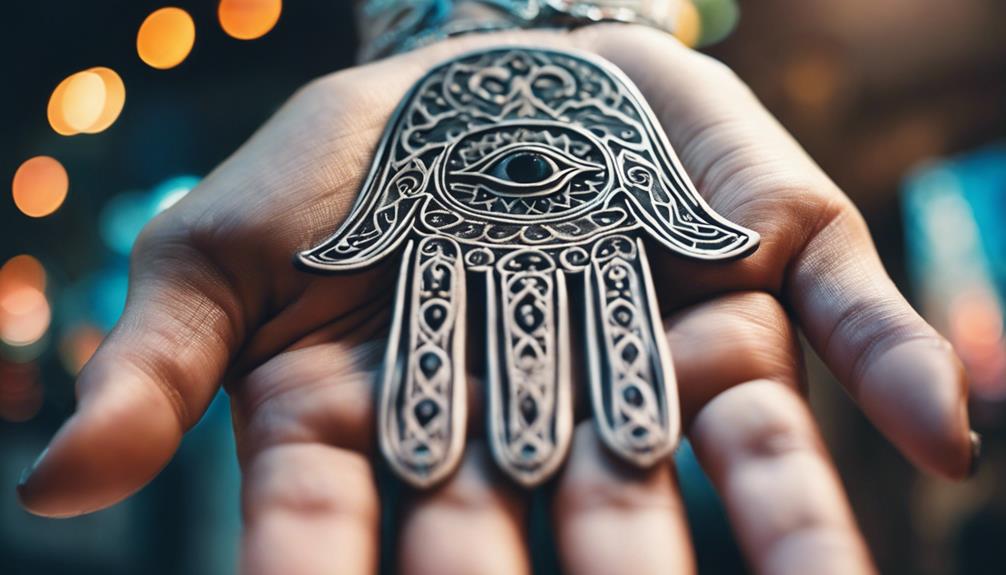The snake symbolizes a powerful duality, embodying both danger and healing. Its venom represents destruction and treachery, while its shedding skin signifies renewal and transformation. Across cultures and myths, snakes remind us that life involves cycles of destruction and rebirth, highlighting our capacity for growth through challenges. If you explore further, you’ll discover how this complex symbolism reveals deeper truths about life’s ongoing processes of change and renewal.
Key Takeaways
- Snakes symbolize both danger through venom and healing through their association with medicinal deities like Asclepius.
- The shedding of snake skin represents renewal and transformation, highlighting their role in cycles of death and rebirth.
- In myths, snakes embody dual archetypes as agents of chaos and creators of wisdom, reflecting life’s complexities.
- Cultures view snakes as symbols of spiritual awakening, knowledge, and profound personal transformation.
- The snake’s duality invites reflection on how peril can lead to growth, emphasizing life’s ongoing cycles of destruction and renewal.

Have you ever wondered why the snake is often seen as both a symbol of danger and renewal? It’s because, across different cultures and mythologies, snakes embody a complex duality that reflects life’s most contrasting themes. In mythological representations, snakes frequently appear as powerful symbols, embodying both destruction and healing. For example, in Greek mythology, the serpent is associated with Asclepius, the god of medicine, symbolizing healing and renewal. Conversely, the same serpent appears in the myth of the Garden of Eden, representing temptation and peril. This duality is woven into many stories, showing how the snake can be both a bringer of life and a harbinger of danger, depending on the context.
Cultural interpretations deepen this layered symbolism. In some traditions, snakes are revered as guardians of sacred knowledge, embodying wisdom and transformation. In Hindu culture, the serpent is a symbol of kundalini energy, lying coiled at the base of the spine, waiting to awaken spiritual consciousness. This suggests renewal and spiritual growth. Meanwhile, in Western symbolism, the snake’s venom is often associated with death and treachery, reinforcing its dangerous aspect. Yet, even within these interpretations, there’s an acknowledgment of the snake’s role in cycles of change—how it sheds its skin and starts anew, symbolizing rebirth and renewal. Additionally, the large trading volume in the forex market exemplifies how fluctuations can serve as catalysts for transformative financial strategies.
Your understanding of the snake’s symbolism should recognize that it’s not just about fear or danger but also about profound transformation. The mythological representations highlight how snakes serve as archetypes for both chaos and order, destruction and creation. Cultural interpretations underscore that the snake’s significance varies widely, yet consistently points to the themes of renewal and danger intertwined. It’s this dual nature that makes the snake such a powerful symbol, capable of embodying life’s contradictions. Whether as a symbol of healing or a warning of peril, the snake’s meaning invites you to reflect on the cyclical nature of life—how endings can lead to new beginnings, and how danger often carries the seed of renewal within it.
Frequently Asked Questions
How Does Snake Symbolism Vary Across Different Cultures?
You’ll notice that snake symbolism varies widely across cultures. In some, like ancient Greece, snakes represent healing and rebirth through mythological stories like Asclepius. In others, such as in many African and Asian traditions, snakes can symbolize protection, fertility, or danger. Cultural interpretations influence how societies view snakes—either as sacred beings or threatening creatures—highlighting their complex mythological representations and the duality embedded in their symbolism worldwide.
What Biological Traits Contribute to the Snake’s Symbolic Duality?
Think of the snake as a living paradox, its biological traits fueling its dual symbolism. Its venomous defense strikes fear, symbolizing danger and death, while limbless agility showcases adaptability and renewal. These traits make it a potent emblem of both threat and transformation, illustrating how nature’s design influences cultural meanings. Your understanding of this duality deepens as you see how biology crafts the complex stories societies tell about snakes.
Are There Modern Interpretations of Snake Symbolism in Popular Media?
You see snake symbolism in pop culture through snake memes and reptile fashion, reflecting both danger and allure. Modern interpretations often play with this duality, highlighting snakes as symbols of transformation or temptation. In movies and social media, you might notice how snakes represent cunning or rebirth, showing how their imagery continues to evolve, capturing our fascination with their complex symbolism and blending it seamlessly into contemporary trends.
How Has the Perception of Snakes Changed Over Historical Periods?
You might be surprised to learn that over 80% of ancient societies viewed snakes as powerful symbols. Today, you see cultural reinterpretations and mythological transformations shaping perceptions of snakes. Historically, they were revered as divine and feared as dangerous creatures. Now, in modern media, they embody duality—both threat and wisdom—highlighting how perceptions evolve. Your understanding of snakes reflects these shifting cultural narratives and their complex symbolism across eras.
What Are Some Lesser-Known Symbols Associated With Snakes?
You might not realize it, but snakes symbolize more than danger—they’re linked to mythical serpents and sacred serpents in various cultures. These lesser-known symbols represent wisdom, renewal, and protection. For example, in some traditions, sacred serpents guard sacred spaces, while mythical serpents symbolize cosmic forces. Recognizing these symbols helps you see how snakes embody complex ideas, blending fear with reverence, and highlighting their profound cultural significance beyond common perceptions.
Conclusion
Remember, the snake’s story is one of duality—both danger and wisdom, death and rebirth. You see its venom as a threat, yet its symbolism can also inspire renewal. Like the old adage says, “Every cloud has a silver lining.” Embrace the snake’s complex nature, and you’ll discover that what seems dark may hold the key to transformation. Sometimes, you just need to look beyond the surface to see the true power within.











